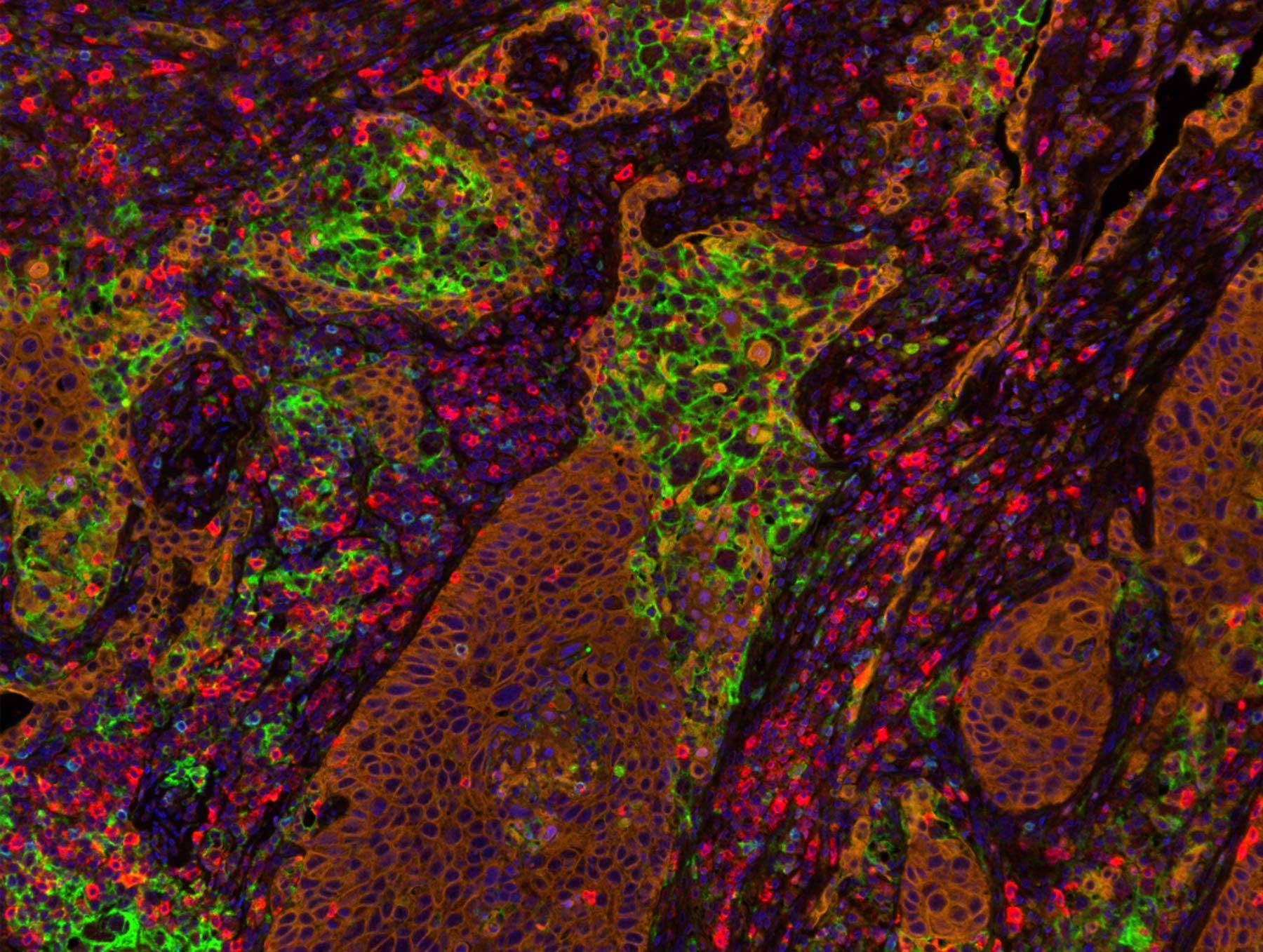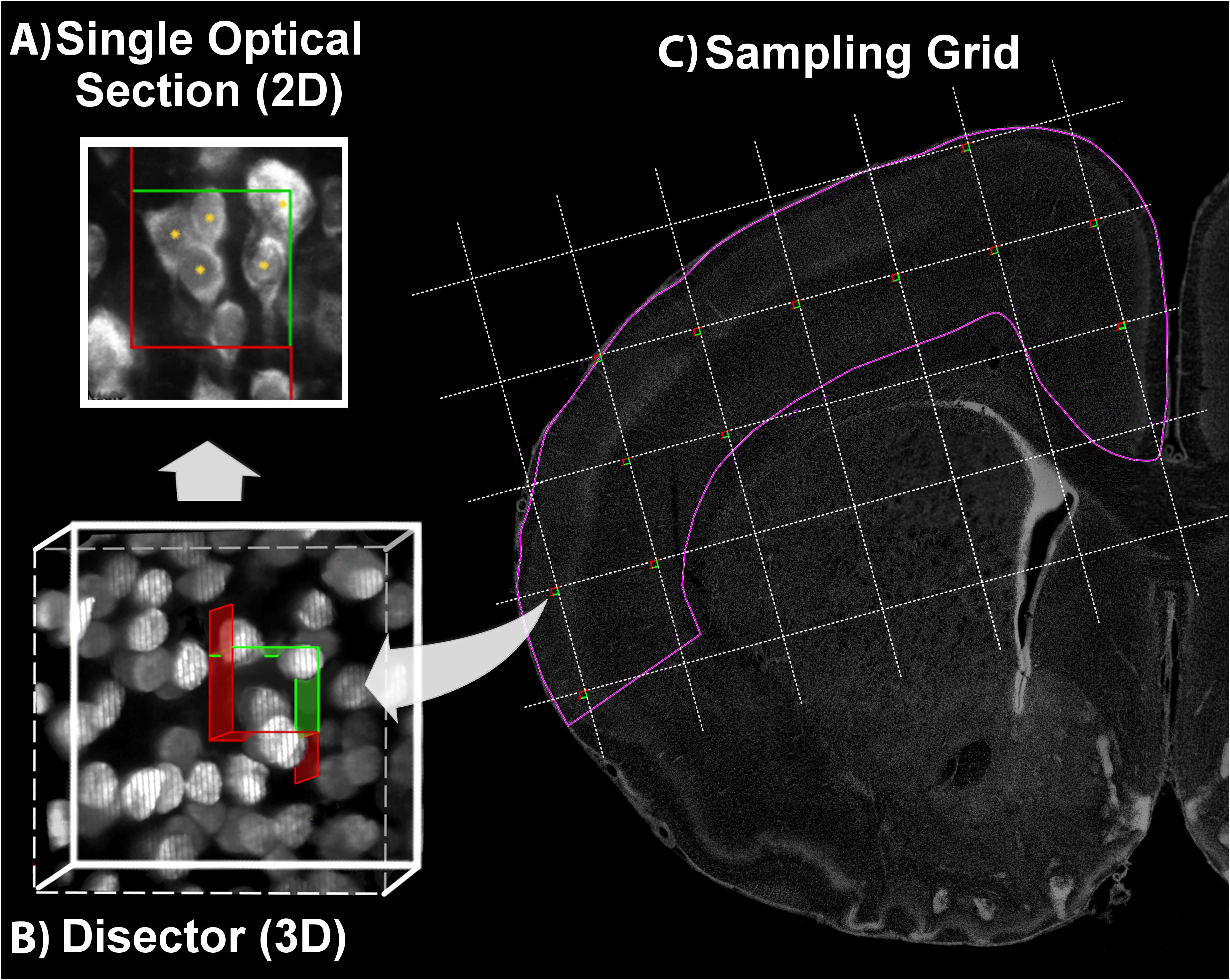Stereology Information for the Biological Sciences

This site introduces both basic and advanced concepts of Stereology. The emphasis is on the use of stereology in biological research, though anyone interested in learning concepts of stereology will find something of interest. The application of stereological methods to biological studies permits researchers to effectively and efficiently gather unbiased, accurate data. This site is dedicated to helping researchers understand the principles of design-based stereology and its advantages over less sophisticated approaches in quantitative histology.
Histopathology image analysis software for cancer diagnostics and research with AI and deep learning technologies in digital Augmented Pathology™. SHTEREOM I is a simple windows-based software for stereological estimation. In this first part, we describe the implementation of the number and volume estimation tools for unbiased design-based stereology.
What is Stereology?
Design-based stereology is a set of methods to ensure rigorous quantitative analysis of the size, shape, and number of objects. When properly used, stereology plays an important role in validating and rejecting experimental hypotheses in biological research. It produces results that are unbiased, efficient, and more reliable than other ad hoc quantitative analyses. Unbiased stereology provides an important contribution to the advancement in biological research by improving the consistency and dependability of quantitative analytical results produced in the laboratory and reported in scientific publications.
An Introduction to Stereology Probes
The most modern unbiased stereology probes are used to quantify aspects of biological tissue in a reproducible and efficient manner. These stereological probes are appropriate for many fields of basic and applied biological and medical research. These probes should always be used in conjunction with systematic random sampling.
OPTICAL FRACTIONATOR to estimate NUMBER of cells
Estimate the size of cell populations with the optical fractionator in thick tissue sections. In this probe, sub-volumes are sampled and then are extrapolated to arrive at an estimate of the entire cell population. A virtual space called an optical disector is used in thick sections that can be oriented anyway you like. Disector counting rules are followed to avoid overestimating, and an oil objective lens is employed for imaging, since fine z-resolution is needed to find the leading edge of the cell and to have enough focal planes to determine if it is in the disector. Note: avoid counting pieces of cells when you really want to count whole cells. OPTICAL FRACTIONATOR
Stereology Software

NUCLEATOR to estimate VOLUME of cells
Estimate individual cell volumes with the nucleator. A point in the cell is identified, then one to four rays are marked and their mean length is used in the formula for the volume of a sphere, generating an estimate of the cell volume. The volume estimate is number-weighted; the sampling is done with a disector in thick sections so that it is not more likely to sample larger cells than smaller cells. It is important to use a method to select cells without bias by picking them in a manner that does not favor any position of the cell in space; you won’t overestimate by sampling too many larger cross-sections or underestimate by sampling too many smaller cross-sections. NUCLEATOR
CAVALIERI POINT-COUNTING to estimate VOLUME of regions
This probe is versatile in that it can be used on thin optical or physical sections that are oriented according to the preference of the researcher. A fraction of the tissue is marked with points over the region(s) of interest, and an extrapolation is carried out to arrive at the estimate. Unbiased estimates of regional volume are easy to obtain efficiently using Cavalieri point-counting. CAVALIERI/POINT-COUNTING
SPACEBALLS to estimate LENGTH of fibers and vessels
Estimate length of biological filaments such as axons or blood vessels without facing the herculean task of tracing them all. Instead the intersections of the filaments with a virtual sphere are marked and converted to a length estimate. Thick sections may be oriented as the researcher prefers. This probe is implemented along with the fractionator method; a volume-fraction is sampled and extrapolated using the reciprocal of the volume fraction to arrive at the estimate of length. SPACEBALLS
ISOTROPIC FAKIR to estimate SURFACE of membranes
To estimate surface area, a triplet of line segments that has the property of being isotropic in space is used to probe in thick sections. Intersections of the triplet with the surface are counted and a formula is used to arrive at an estimate of the surface area; the more intersections recorded the greater the surface. Like the other regional probes on this page, thick, preferentially oriented sections are used and the fractionator method works to make an extrapolation based on the fraction of volume that was sampled. ISOTROPIC FAKIR
⚠️ COVID-19 update: Click here to learn more about how MBF Bioscience can help |
Recommended Readings
Recent Noteworthy Stereology Publications
Published papers using unbiased stereology; last updated on 06.01.2021.
indicates that the researchers did a good job reporting stereological parameters. To see what parameters should be reported click here.
Effects of Sex and Mild Intrainsult Hypothermia onNeuropathology and Neural Reorganization following Neonatal Hypoxic Ischemic Brain Injury in Rats
Recent Webinars
Date: March 25th, 2021Introduction to Stereo InvestigatorStereo Investigator Product Manager, Nathan Liese, and Senior Biosystem Specialist, Ira Gardner-Morse at MBF Bioscience, will be hosting a webinar to discuss how to get started with Stereo Investigator.
|
Date: April 21, 2020Unbiased Stereology: Online Question and Answer Session with MBF BioscienceDr. Dan Peruzzi, stereology educator and staff scientist at MBF Bioscience, covers both theoretical and practical aspects regarding the use of unbiased stereology to quantify morphological parameters of tissue observed under a microscope or a slide scanner.
|
MBF Bioscience Forum
Get answers to your most pressing research and technical questions from MBF scientists and fellow researchers.
|
Sponsored by MBF Bioscience
developers of Stereo Investigator, the world’s most cited stereology system
Maintained by Marco A. Lopez-Sanchez - This website was last modified: 2021/05/03
GrainSizeTools is a free, open-source, cross-platform script written in Python that provides tools for (1) describing and visualizing grain size populations, (2) estimating differential stress for different mineral phases via paleopizometers and (3) apply stereology methods to approximate the actual distribution (3D) of grain size from sections. The script does not require previous experience with the Python programming language (see the documentation below and FAQ). For users with coding skills, the script is organized in a modular (functional) way facilitating the reuse and code extension.
Latest release: v3.0.2
Date: 2020/12/31
See notes at https://github.com/marcoalopez/GrainSizeTools/releases/tag/v3.0.2
Features at a glance
Import and manipulate tabular-like datasets including txt, csv, or excel formats.
Full automatic descriptive statistics of grain size populations including:
- Several averages (arithmetic and geometric means, median, and frequency peak ('mode') via Gaussian Kernel Density Estimator)
- Estimation of robust confidence intervals (including some specific methods for lognormal populations such as the modified Cox or the GCI method)
- Measures of dispersion and shape of the population
- Normality and lognormality test
Estimate differential stress using paleopiezometers. It includes multiple piezometric relations for quartz, olivine, calcite, and feldspar (others planned!)
Ready-to-publish plots in bitmap or vector format (see screenshots below), including:
- Histograms and kernel density estimates
- Area- or volume-weighted plots
- Normalized plots
- Quantile-quantile plots, and more
Stereology methods (approximate the actual 3D grain size distribution from data collected in plane sections):
- Saltykov method
- Two-step method (lognormal fitting, shape characterization)
Download
You can download the script at the following sites:
https://github.com/marcoalopez/GrainSizeTools/releases
http://figshare.com/articles/GrainSizeTools_script/1383130
https://sourceforge.net/projects/grainsizetools/
Documentation
Others
Screenshots (v3.0+)
Citation guidelines

Script reference
Lopez-Sanchez, Marco A. (2018). GrainSizeTools: a Python script for grain size analysis and paleopiezometry based on grain size. Journal of Open Source Software, 3(30), 863, https://doi.org/10.21105/joss.00863
License
GrainSizeTools script is licensed under the Apache License, Version 2.0 (the 'License')
The documentation of GrainSizeTools script is licensed under a Creative Commons Attribution-NonCommercial-ShareAlike 4.0 International License (CC BY-NC-SA 4.0).
Community guidelines
The GitHub website hosting the project provides several options (you will need a GitHub account, it’s free!):

Stereology Systems

Open a discussion: This is a place to:
- Ask questions you are wondering about.
- Share ideas.
- Engage with the developers (still just me).
Open and issue: This is a place to track bugs or requests for specific features on the scripts.
Create a pull request: You modified, corrected or added a feature to one of the notebooks and send it for one of the developers to review it and add it to the main page.
Copyright © 2021 Marco A. Lopez-Sanchez
Stereology Software Free
Information presented on this website and the documentation of the script is provided without any express or implied warranty and may include technical inaccuracies or typing errors; the author reserve the right to modify or enhance the content of this website as well as the documentation of the script at any time without previous notice. This webpage and the documentation is not liable for the content of external links.
Stereology Software Free
Hosted on GitHub Pages — This website was created with Typora